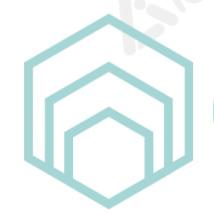GoGreen
GoGreen: Pioneering a carbon-neutral platform for passionate travelers. Experience sustainable journeys empowered by renewable energy at every touchpoint.
Created on 13th August 2023
•
GoGreen
GoGreen: Pioneering a carbon-neutral platform for passionate travelers. Experience sustainable journeys empowered by renewable energy at every touchpoint.
The problem GoGreen solves
GoGreen addresses the pressing environmental concern of carbon emissions in the travel industry by offering a comprehensive platform that enables travelers to explore the world sustainably, minimizing their carbon footprint and fostering a greener future.
Traditional travel often contributes to environmental degradation through excessive carbon emissions. GoGreen revolutionizes this by creating a holistic solution that connects travel enthusiasts with a carbon-zero experience. By leveraging renewable energy and promoting eco-friendly practices, our platform empowers users to explore, learn, and appreciate the world while actively participating in its preservation.
Challenges we ran into
Challenges Faced While Building the GoGreen WebApp
During the development of the GoGreen web application, we encountered a series of challenges that tested our problem-solving skills, teamwork, and determination. These hurdles spanned various aspects of the project, from technical roadblocks to conceptual complexities. One specific bug that stood out was related to the integration of the renewable energy tracking system.
Auth0
Integrating Auth0 with our Node.js backend posed challenges in user session management and token validation. Inconsistent sessions and unauthorized access were issues we encountered.
To overcome this, we restructured our token validation, incorporated error handling, and introduced session renewal mechanisms. Collaborating with Auth0's support, studying documentation, and rigorous testing led us to a secure and seamless integration.
Overcoming the Bug
Addressing this bug required a multi-faceted approach. We first conducted an extensive code review to identify potential loopholes in our energy tracking logic. This process revealed some inconsistencies in the data flow, particularly during high user traffic periods. To counter this, we optimized the backend infrastructure to handle data influx more efficiently.
Moreover, we implemented comprehensive error logging and monitoring mechanisms to swiftly detect and respond to any irregularities. This allowed us to gather essential data during instances of energy usage miscalculation, enabling us to trace the root cause more effectively.
After implementing these measures, rigorous testing was conducted under varying load conditions to ensure the bug had been successfully mitigated. Through iterative testing, refining the code, and closely collaborating with our development team, we were able to eliminate the energy tracking bug and restore accurate metrics presentation to users.
Tracks Applied (8)
Most Creative Use of GitHub
Major League Hacking
Best Use of MongoDB Atlas
Major League Hacking
Best Domain Name from GoDaddy Registry
Major League Hacking
Auth0 Track
Auth0
Best Use of APIs
Postman
Best Postman Public Workspace
Postman
